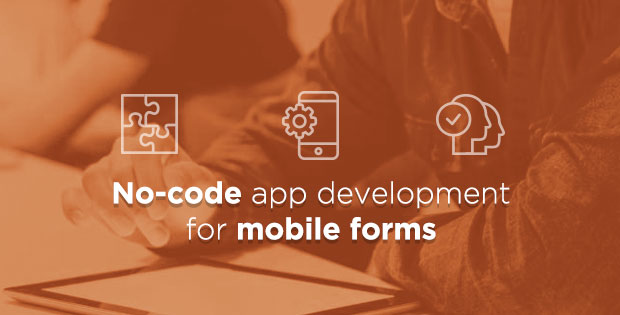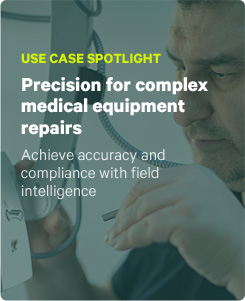
Use no-code platforms to quickly develop mobile apps for business
Recent industry reports show that there’s a growing demand for custom mobile apps in the Enterprise. More and more people are discovering that using well-designed business apps for certain tasks on the go can add tremendous value to day-to-day activities. Everyone from employees and partners, to suppliers and customers want to use a mobile device they already have in their pocket to quickly complete work tasks in the field. No need to bring a laptop or, gulp, carry around a stack of papers and a clipboard.
The problem is that this growing demand for custom mobile apps is not well met by in-house R&D resources. Most companies don’t have the bandwidth to develop multiple mobile apps using traditional development tools, which has opened the door to no-code app development platforms, sometimes referred to as RMAD.
What is RMAD, anyway?
RMAD stands for “rapid mobile app development” platforms – no-code (or low-code) programming tools that let users quickly and easily build mobile apps for a wide range of business processes. These no-code tools let companies develop, test, and deploy their own mobile solutions with minimal, or no support from R&D professionals, relying instead on business users who know the job-to-be-done really well, but have no formal training building or testing technology solutions. These users are also known as “citizen developers.”
Who is a citizen developer?
IT research analysts and consultants Gartner defines a citizen developer as “…a user who creates new business applications for consumption by others using development and runtime environments sanctioned by corporate IT.” Once IT has reviewed the no-code platform for security and other considerations, the managers, supervisors or administrators, can sign up for an account and start develop whatever apps they need. A key benefit: they can be up and running in days or weeks instead of months or years.
How do you build business apps using a no-code platform?
Most citizen developers don’t know how to code so no-code platforms offer user-friendly interfaces based on point-and-click and drag-and-drop techniques. Building a mobile app for data collection in the field starts with a WYSIWYG form builder. Add questions, select input options (free text, drop down menu, radio buttons, capture a photo…) and you’re on your way. Use powerful conditional logic to hide/show sections and questions based on user inputs.
Integrating back-office systems and cloud storage services is as easy as selecting a pre-configured integration (Box, Google Drive, SharePoint…), enter your credentials, and that’s it. The connection has been made in the app.
Automated point-and-click workflows let you select where and how submitted data should be distributed, i.e. store a PDF copy in Box, send an email with the PDF attached to the customer via email and so on. No coding required.
Finally, you can send collected data to an analytics engine to view operational summaries as dashboards and build custom documents and reports.
At the heart of the no-code story is the ability for regular business users to quickly build and deploy enterprise-grade smart mobile apps into the field.
Standalone vs Mobile Front End
These smart mobile apps can work on their own or be used as a mobile front-end to larger enterprise systems.
A standalone solution is ideal for customers who are not using ERPs or other Field Service Management systems to manage field service operations.
The app can also be used as a mobile-first front end to an existing Field Service Management system, such as ServiceMax, ServiceMax Asset 360 for Salesforce Field Service, or Salesforce. This versatility to integrate deeply and seamlessly with a range of business systems provides another layer of adaptability to support the needs of any team, and any level of ability.
Want to learn more about how ProntoForms’ no-code solution can enable your team, sign up for a demo and a free trial here.




